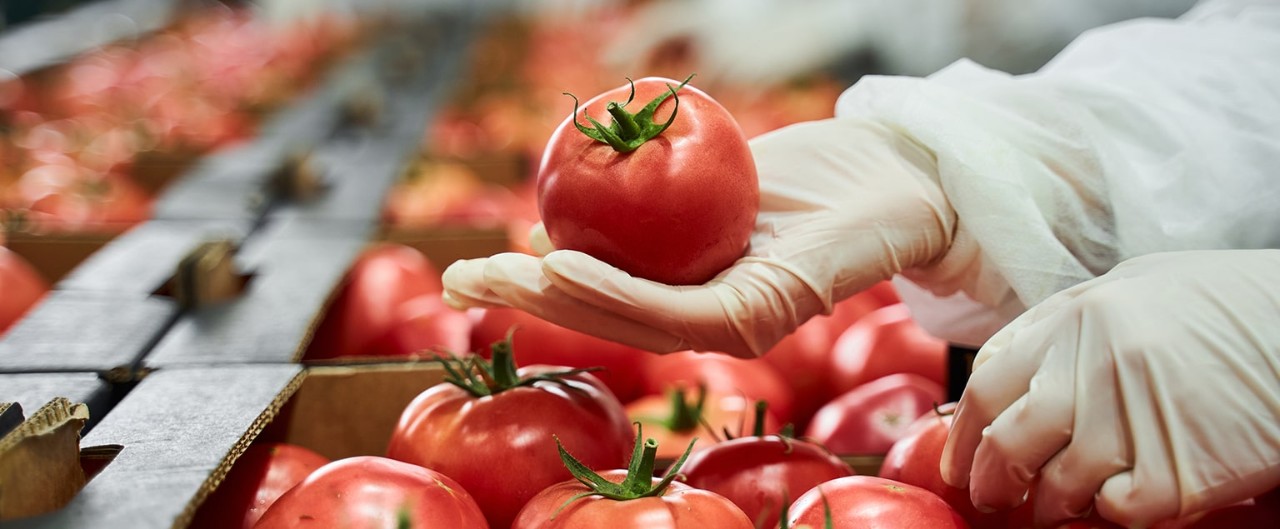

Is the USDA Food Supply Chain Guaranteed Loan Program right for you?
The federal American Rescue Plan (ARP) Act of 2021 created several programs to help businesses and individuals recover following the COVID-19 pandemic.
If your business works in the middle of the food supply chain, the U.S. Department of Agriculture (USDA) has a new program that may be right for you. Under the USDA Food Supply Chain Guaranteed Loan Program, the federal government will provide up to $1 billion in guaranteed loans.
Both established businesses and start-ups can put the money toward business expansion, manufacturing, and transportation, among many other uses.
Key takeaways
- This new loan program provides applicants up to $40 million to put toward “activities in the middle of the food supply chain.” This definition naturally includes a broad range of companies, whether involved in “aggregation, processing, manufacturing, storing, transporting, wholesaling or distribution of food.”
- The USDA’s priority outcome goals relate to rural communities, but the Food Supply Chain loan program is not limited to rural businesses. Unlike other federal loan programs, applicants may be located anywhere within the United States.
- The loan program has reasonable credit requirements for borrowers, such as a minimum 680 credit score. Because the loans are collateralized, lenders may consider applicants with riskier credit profiles.
Who the USDA Food Supply Chain loan benefits
The USDA Food Supply Chain Loan Program is widely available to any new business or experienced company working in aggregation, processing, manufacturing, storing, transporting, wholesaling, or distribution of food.
Due to the economic disruption caused by the ongoing pandemic, the USDA intends “to create a more resilient, diverse, and secure” food supply chain. The three priorities are to:
- Jump-starting economic recovery in rural communities disproportionately affected by the pandemic.
- Providing equitable access to Rural Development programs for rural residents.
- Reducing and mitigating the effects of climate pollution on rural populations.
You may notice that these priorities focus on the effects of the loan program on rural communities. However, the USDA does not limit eligibility to businesses in rural areas – almost any business entity within the U.S. may apply. Eligible businesses include:
- Cooperatives.
- Both for-profit and not-for-profit businesses.
- Federally recognized tribal groups.
- Public entities.
- Food supply chain entrepreneurs.
This list accounts for the vast majority of companies operating within the middle of the domestic food supply chain. The final eligibility criteria involve some miscellaneous provisions:
- The business must perform “food product projects.”
- Depending on the type of applicant, the company must comply with either the USDA FSIS (i.e., meat, poultry, or egg producers) or the FDA (i.e., all other food producers).
- The business’s market share must be less than that held by the fourth largest share of the market for the particular species (i.e., animal or plant product).
- Individuals must have either U.S. citizenship or permanent residence status.
- Credit availability from other sources will not affect the application review process.
A USDA Food Supply Chain loan could reinvigorate or expand your business if your company works in the middle of the food supply chain industry.
Advantages of the program
The USDA Food Supply Chain Guaranteed Loan Program differs from other government-backed loan programs.
1. No geographical limitations.
Another USDA loan program, the Rural Development Guaranteed Loan Program, requires the business to work in rural areas. That restriction does not apply to the Food Supply Chain Guaranteed loan program. So long as you work in a qualified industry within the U.S., you meet the location requirement.
2. Several uses qualify for the loan.
Your company must perform some labor or service within the middle of the food supply chain.
The USDA defines this category quite broadly – a “food supply chain business” includes meat, poultry, and fish processors, storage facility operators, packagers, distributors, and transporters. Such a business may use the loan for:
- Business expansion.
- Repair.
- Modernization.
- Conversion.
- Land or real property purchases.
- Infrastructure improvements.
- Equipment purchases.
- Working capital.
3. More favorable repayment terms.
With Rural Development’s concurrence, the lender establishes and justifies the guaranteed loan term based on the use of guaranteed loan funds, the useful economic life of the assets being financed (and those used as collateral), and the borrower’s repayment ability. The loan term must not exceed 40 years.
That’s almost twice as long as the repayment period offered under comparable Small Business Association (SBA) loan programs.
4. No extensive fees.
Some SBA and other USDA loans impose renewal or guarantee fees. For certain SBA loans, for example, the lender may charge a renewal fee of 3.5% or higher depending on the total principal and loan type. That’s in addition to guarantee and yearly service fees.
The USDA Food Supply Chain Loan Program requires none of these fees. Depending on loan size, the savings could be extensive.
5. More competitive interest rates.
The federal government provides several types of business loans. A government guarantee reduces the risk for the bank which allows for lower interest rates with risk-based pricing. This can make these types of loans competitive with or better than private business loans.
Borrowers in the Food Supply Chain loan program may choose either a fixed-rate or adjustable interest rate loan.
The USDA Food Supply Chain Guaranteed Loan Program can be a great program for businesses operating within this space. If your company is considering expansion, infrastructure improvements, purchasing equipment, or one of the many other approved loan uses, this may be a great option for you. Learn more about USDA guaranteed loans.